Abstract: A complete guide to the internal testing of the new version of the Coinbase Wallet. Will it be the next killer app?
On June 29, Base co-founder Jesse Pollak announced on the X platform that a major announcement would be made on July 16. Based on market and community discussions, Coinbase may announce updates related to its wallet product next week. BlockBeats has obtained access to the internal testing of the new version of the Coinbase Wallet and will reveal how the new wallet attempts to build an integrated platform between social discovery, transaction flow, and the creator economy.
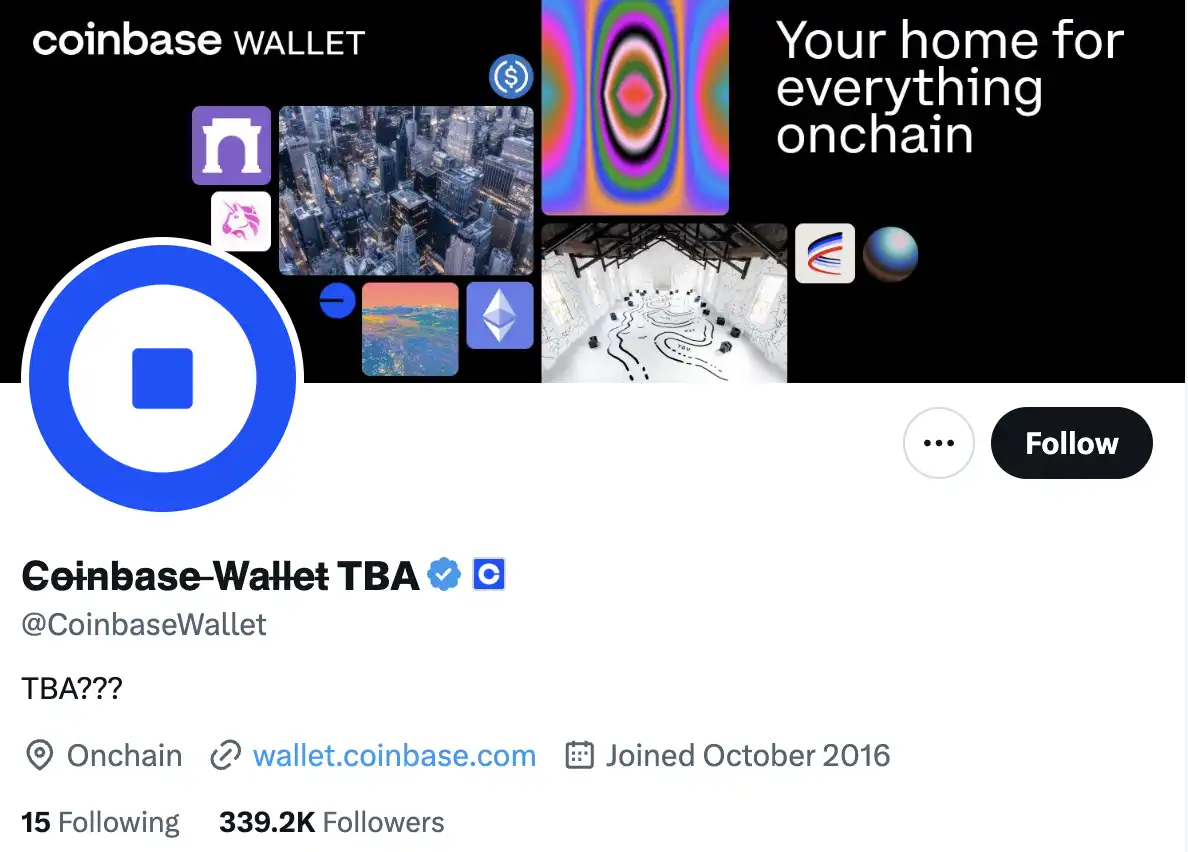
Unlike traditional wallets that only serve the purpose of asset storage and transaction execution, the new version of the Coinbase Wallet is given a greater mission: it aims to become a distribution platform for on-chain content, a promotional channel for developer products, and a new social square for traders and creators. Behind this wallet-driven distribution logic is Coinbase/Base's profound reflection on the bottleneck of on-chain user growth—when users stagnate after completing their first transaction, the flywheel of the on-chain economy struggles to turn. To keep users "engaged" and allow the product to "break out," they chose to rewrite the wallet as an "open system driven by social interaction, incentivized by transactions, and sustainable for creativity."
Evolution of the Coinbase Wallet
The previous version of the Coinbase Wallet had basic functions similar to other crypto wallets.
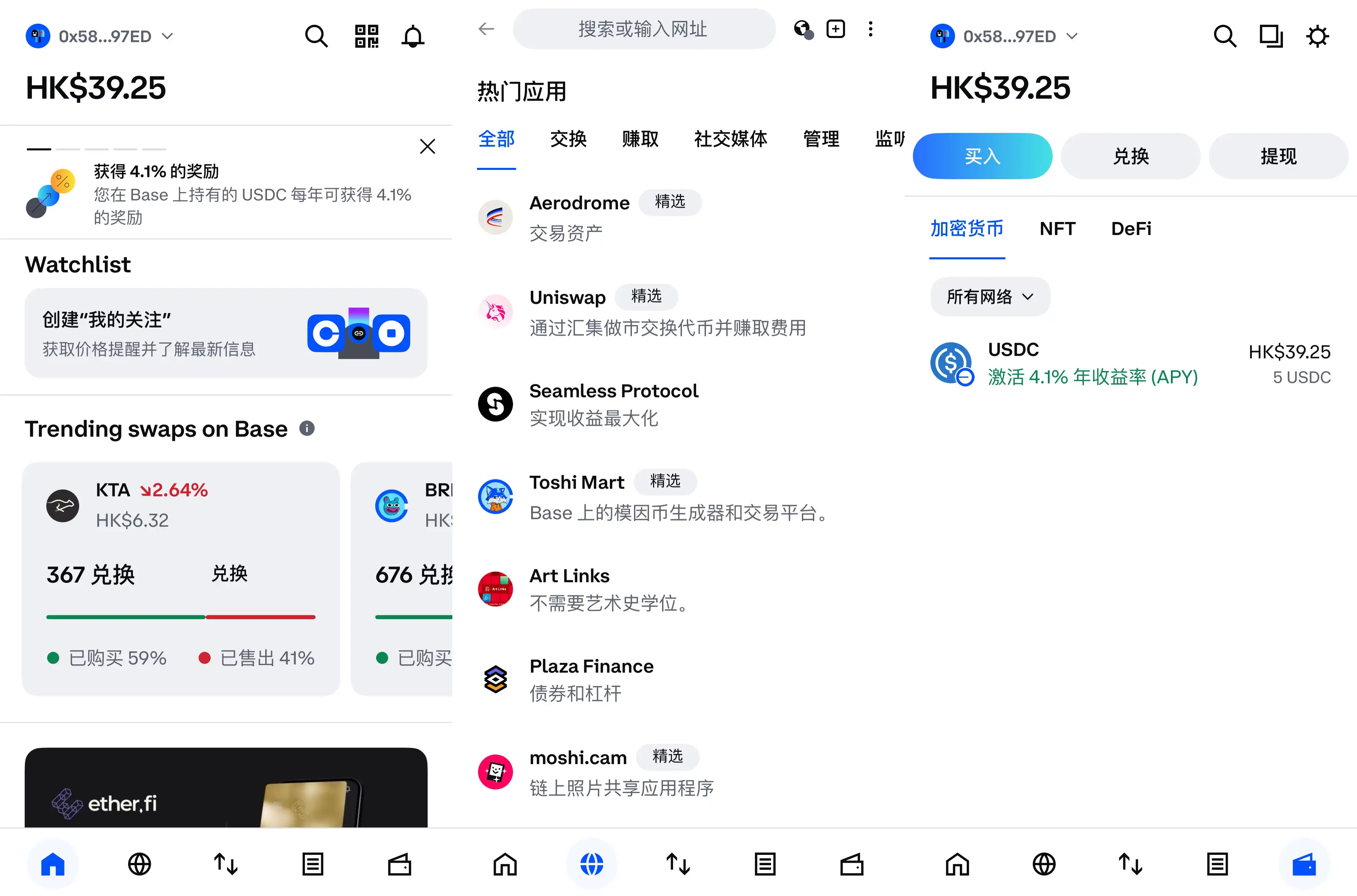
Old version interface of Coinbase Wallet
The new version of the wallet is mainly divided into home, social, transactions, chat, notifications, and wallet balance.
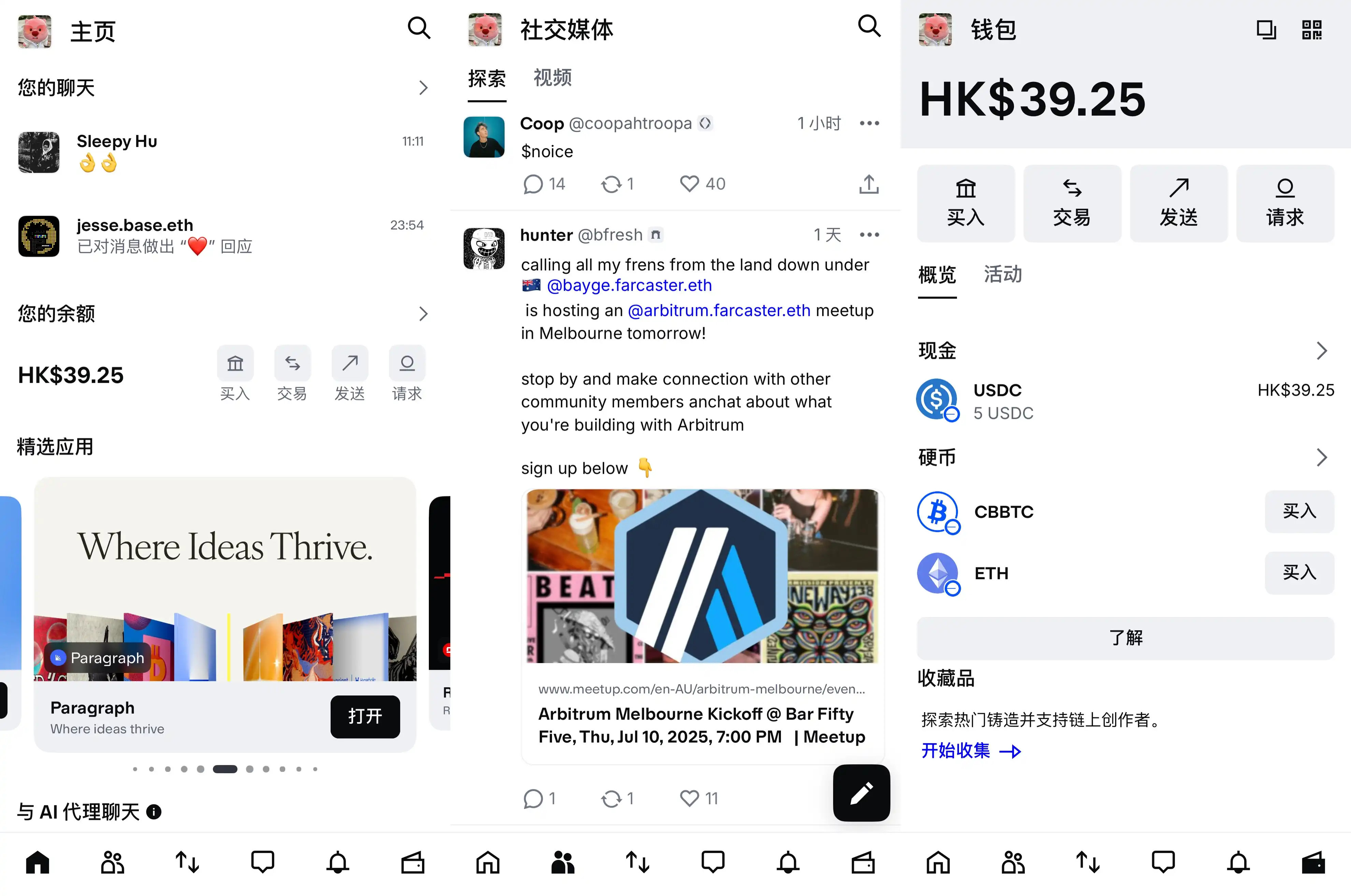
In the main operation interface, there are AI Agent conversations, selected applications, and a Mini App collection.
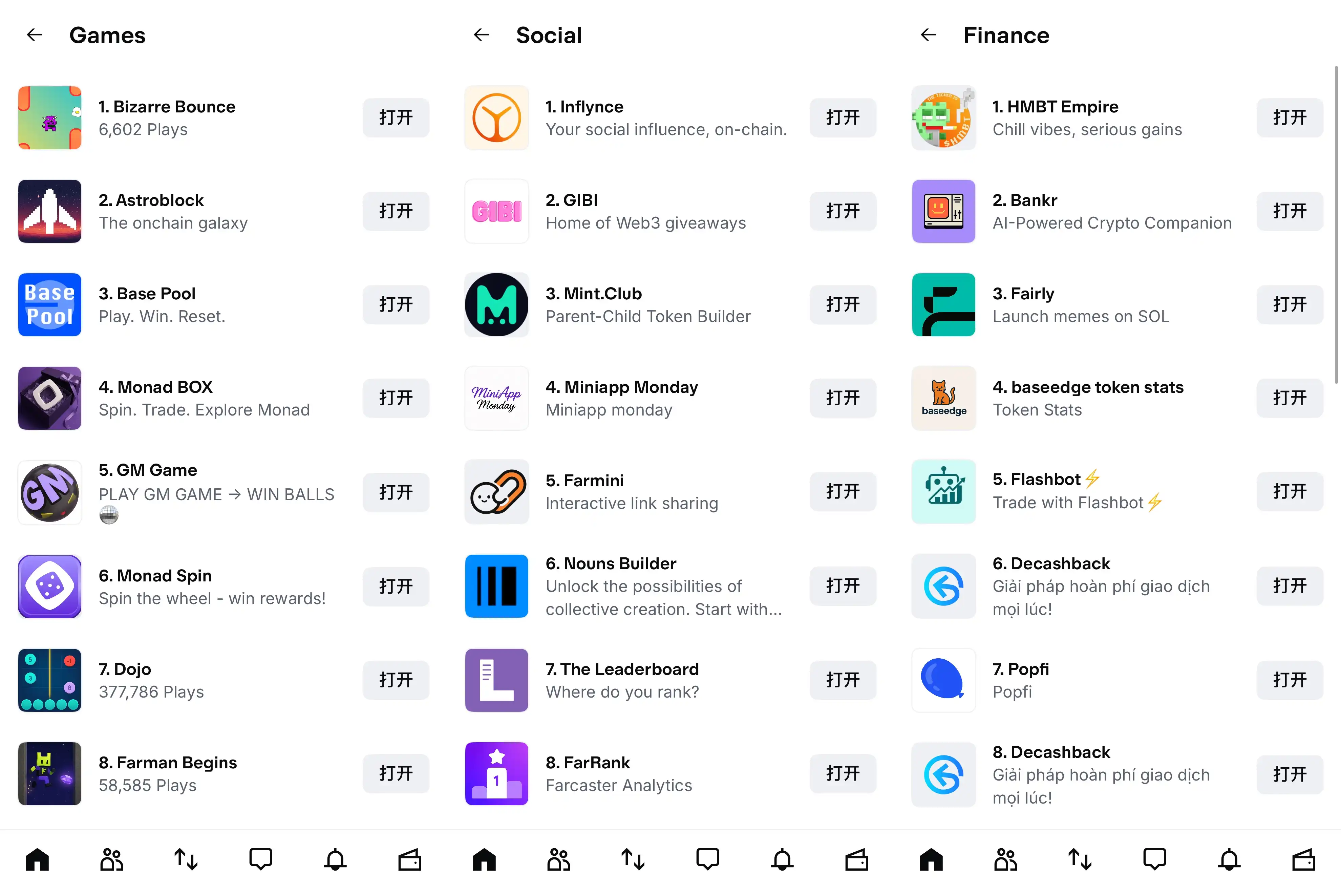
Applications are popular projects within the crypto ecosystem, such as Noice, Fantasy, Morpho, etc., allowing users to directly open Mini Apps for operations.
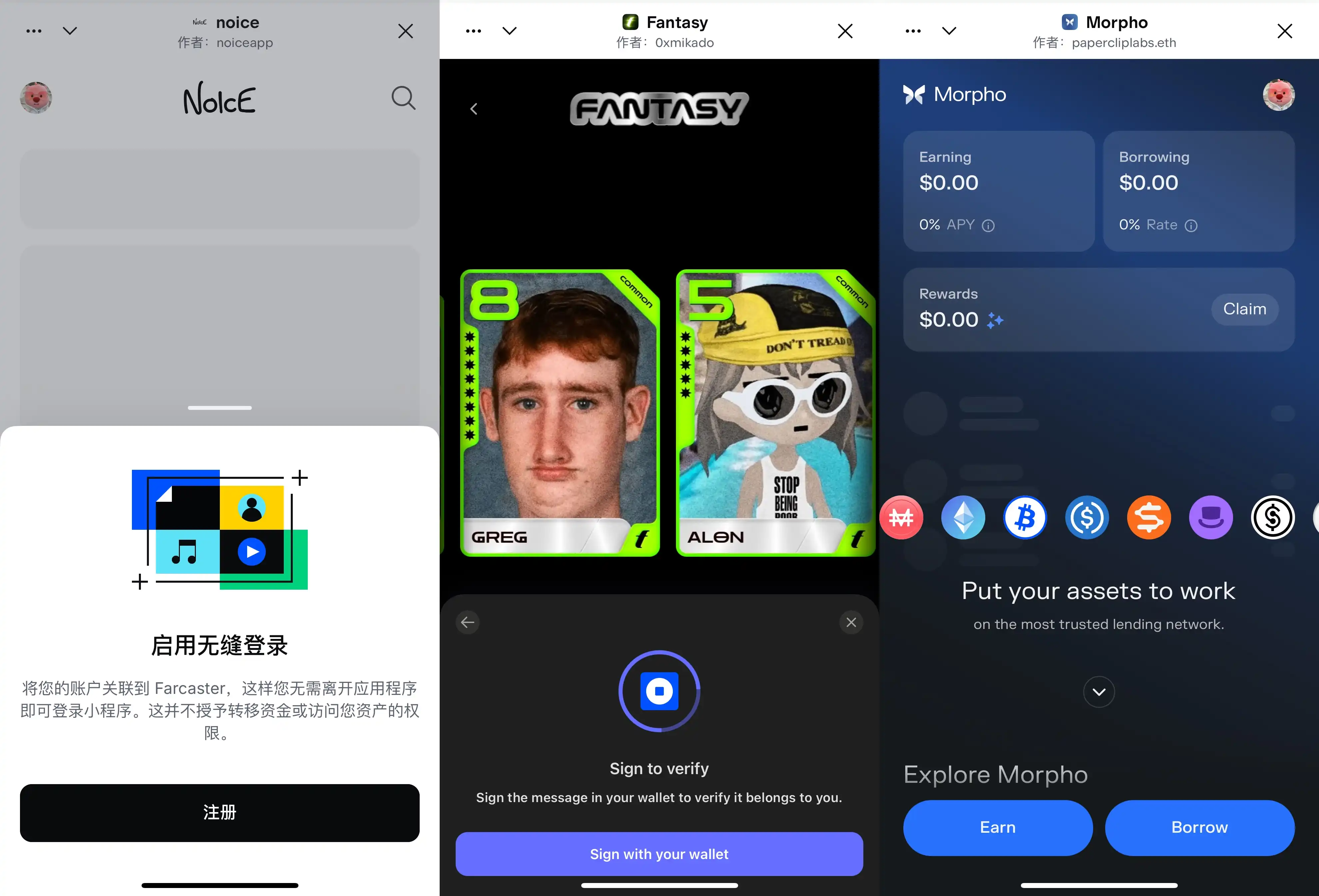
The biggest change in this wallet update is the integration with Farcaster, which aggregates information streams, videos, Farcaster user systems, notifications, etc., similar to WeChat's Moments.
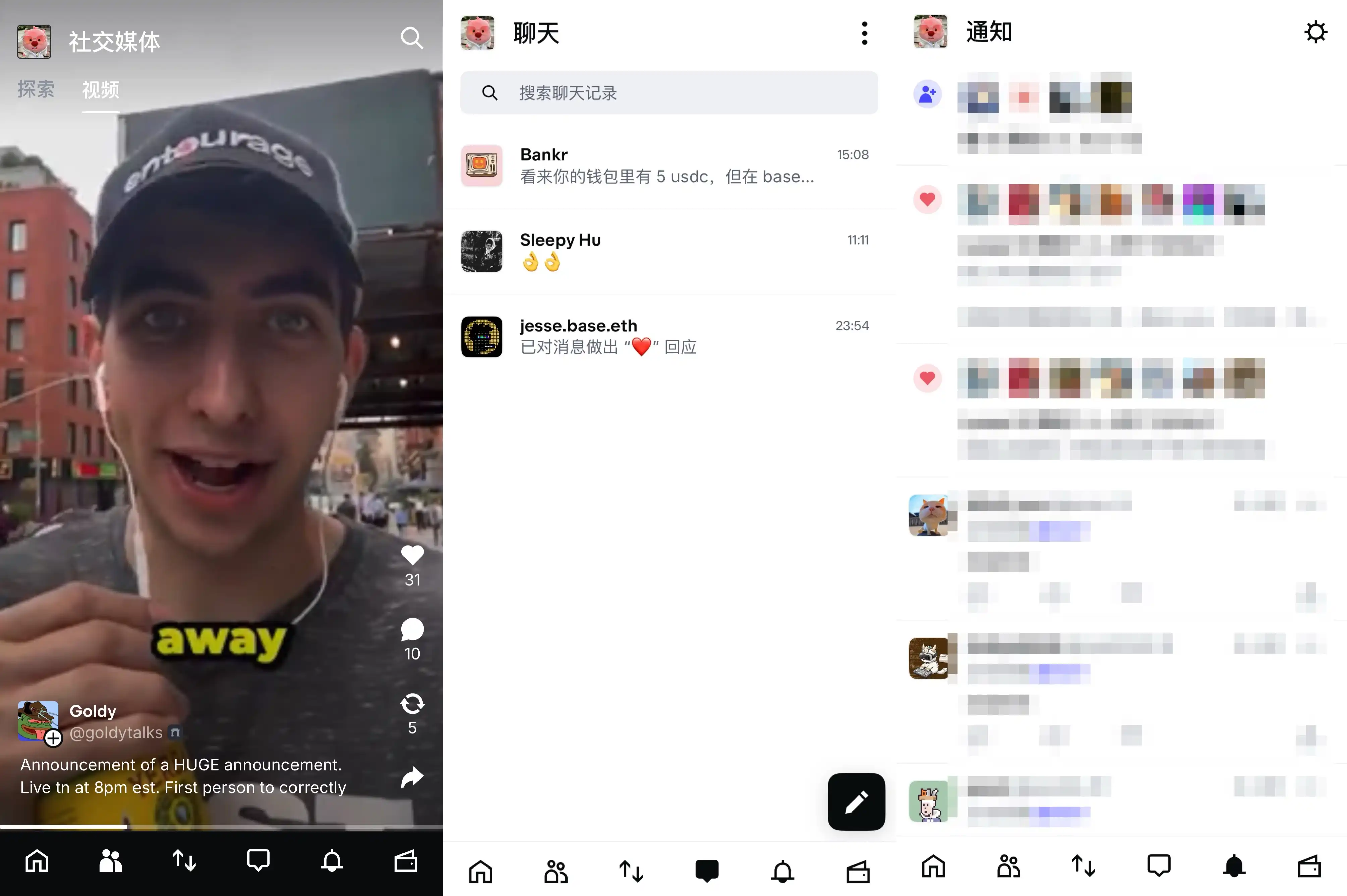
Blockchain has no social aspect, only consumer social
With the integration of Farcaster, users can browse tweets, watch short videos, chat directly with friends or even AI, order food, and play games, making the Coinbase Wallet a super integration. In contrast, previous purely social applications have seen far more failures than successes in the blockchain space. Concept products like Lens, Mastodon, and nostr, which started from DID or social sovereignty, have fallen by the wayside. In this market closely related to "money," it seems no one is willing to pay for "social" that doesn't generate revenue.
As the market gradually realizes this, project teams have begun to integrate "money" into social interactions, giving rise to the Consumer Social track. The first to break out was the once-phenomenal community app Friend.Tech, and the most successful in this track is likely to be PumpFun, which is about to "issue tokens." The founder of AllianceDao, which invested in PumpFun, Wangqiao "QwQiao," has repeatedly stated in interviews or public occasions that AllianceDAO considers consumer social applications as one of the main investment tracks in blockchain, stating that "social trading products are at the edge of large-scale adoption."
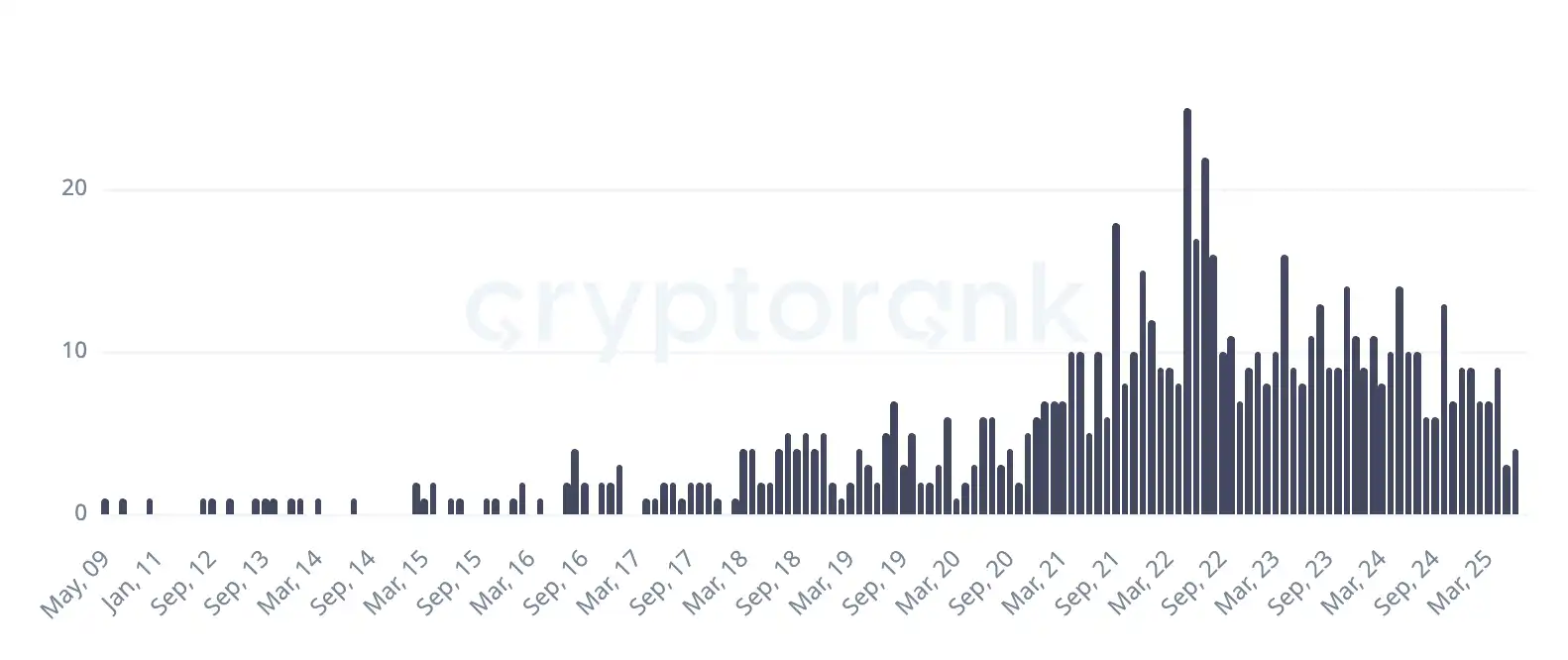
The number of VC investments in the social track peaked around 2022 and continues to increase, source: Cryptorank
In fact, several top venture capital firms are optimistic about the social trading track. Paul Veradittakit, a partner at Pantera Capital, points out from the perspective of the creator ecosystem that "Web3 social platforms provide new ways for users to interact with creators and influencers. For example, the 'Embeddable Posts (Frames)' feature launched by the decentralized social protocol Farcaster quickly gained market attention, and Blinks, which can be embedded on X, also emerged on Solana." Such projects are not isolated; decentralized social protocol DeSo's Focus application allows users to pay for content subscriptions with cryptocurrency and introduces a tokenized creator economy cycle, or social applications like Zora that tokenize creator content.
One of the founders of a16z, Andreessen Horowitz, places more emphasis on the "copy trading" social aspect brought by transactions, noting that young investors are returning to active trading and are eager to follow the strategies of successful traders. In its Fintech report, it points out that retail investors will increasingly "follow" individuals skilled in investing, akin to star fund managers in the digital age. For example, eToro's crypto copy trading feature is a typical practice of retail following trading strategies. The report also emphasizes that "underlying communities" are rising, with communities like Stocktwits, WSB, and Commonstock combining trading behavior and social media through transparent trading data and collaborative tools. This indicates that a new generation of investors tends to share information and collectively discover Alpha on social platforms.
Mainstream blockchain venture capital firms favor the social trading track primarily because this field can integrate community consensus and the creator economy, lowering investment thresholds and enhancing user stickiness. They believe that publicly sharing trading ideas and co-creating investment strategies (such as copy trading and multi-layer incentive communities) on decentralized social networks will become a new trend. This not only educates and motivates users but may also create new community-driven Alpha. On the other hand, if the vitality of this model can drive a positive internal cycle in the creator economy, it could change the existing "social landscape."
The current logic of social sovereignty may shift from driving user participation in social interactions to integrating traders into social circles—leveraging a large circle of traders to drive the creator economy—forming a closed loop where wealth effects overflow (traders gain Alpha, creators receive subsidies, etc.) to capture broader traffic.
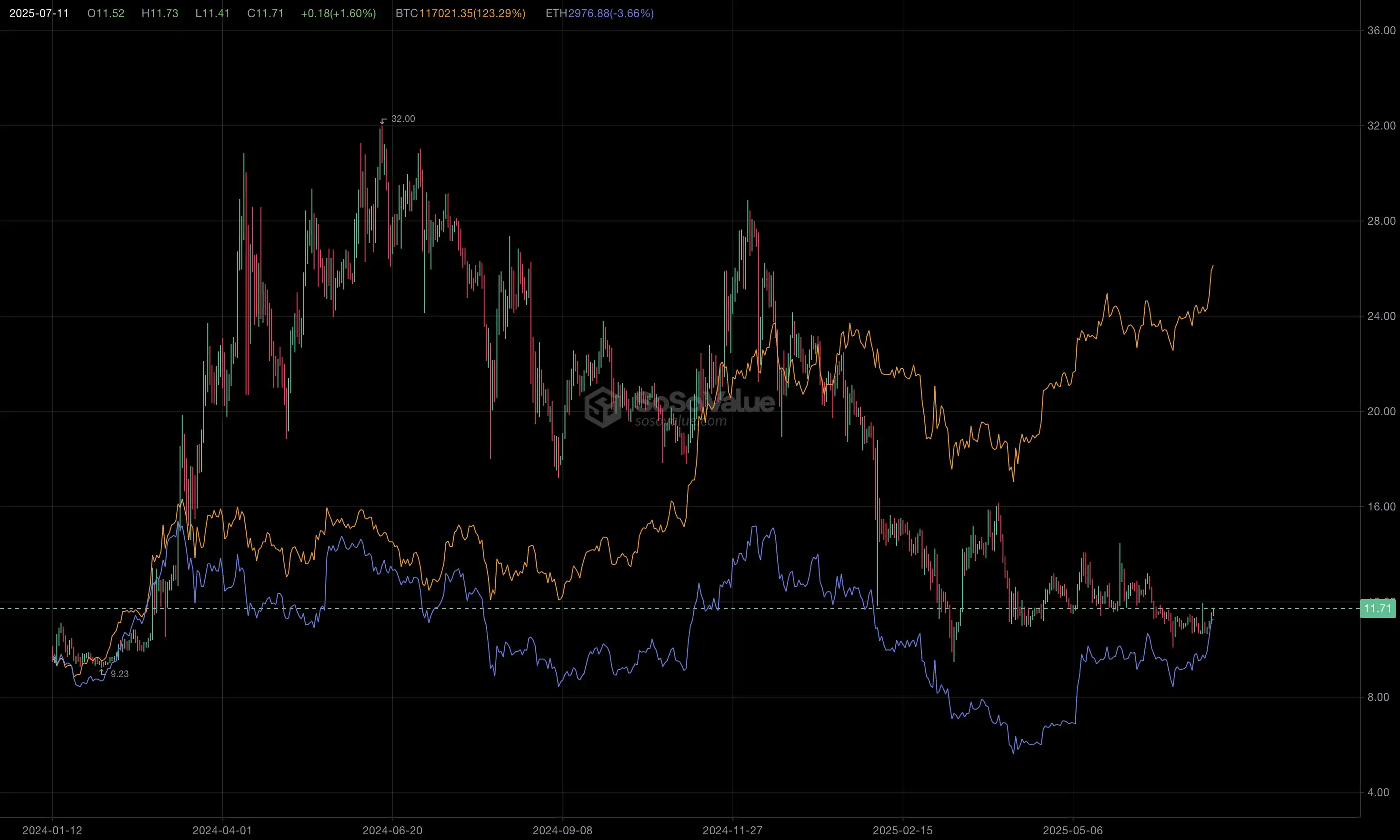
The rise and fall of the social track do not correspond to the overall market cycle, presenting an independent market, source: SoSoValue (Yellow: BTC, Blue: ETH, Red and Green: social track indicators)
Which projects invested by Coinbase can achieve 1+1>2 when "plugged into" Coinbase Wallet
Among all institutions, Coinbase/Base has been the most vigorous in promoting the concept of social finance and is also one of the VCs with the most investment in this field.
From creator finance to trading social, from stablecoin payments to physical social consumption, Coinbase's investment landscape is now sufficient to support a complete super application closed loop. Besides the existing functions, what applications can make Coinbase Wallet even more "universal"?

An incomplete count of the number of VC investments in the "social track," in reality, Coinbase has invested in more "social-like applications," source: Cryptorank
Towns
Towns is a group chat protocol and application designed specifically for online communities, resembling a decentralized, end-to-end encrypted version of a community DAO organization. If added to the application, it would elevate the overall gameplay beyond existing in-app chat, as the programmable groups embedded in the wallet could offer more functionalities compared to the numerous industry-specific TG subscription trading and news groups (e.g., setting up automatic following in the group, news).

ZAR
ZAR allows users to find nearby stablecoin merchants and securely and conveniently exchange cash for digital currency. The ZAR debit card can be used anywhere that accepts Visa. If this feature is integrated into the Coinbase Wallet, the reuse rate between shops and buyers in many regions where stablecoins are widely used will significantly increase.
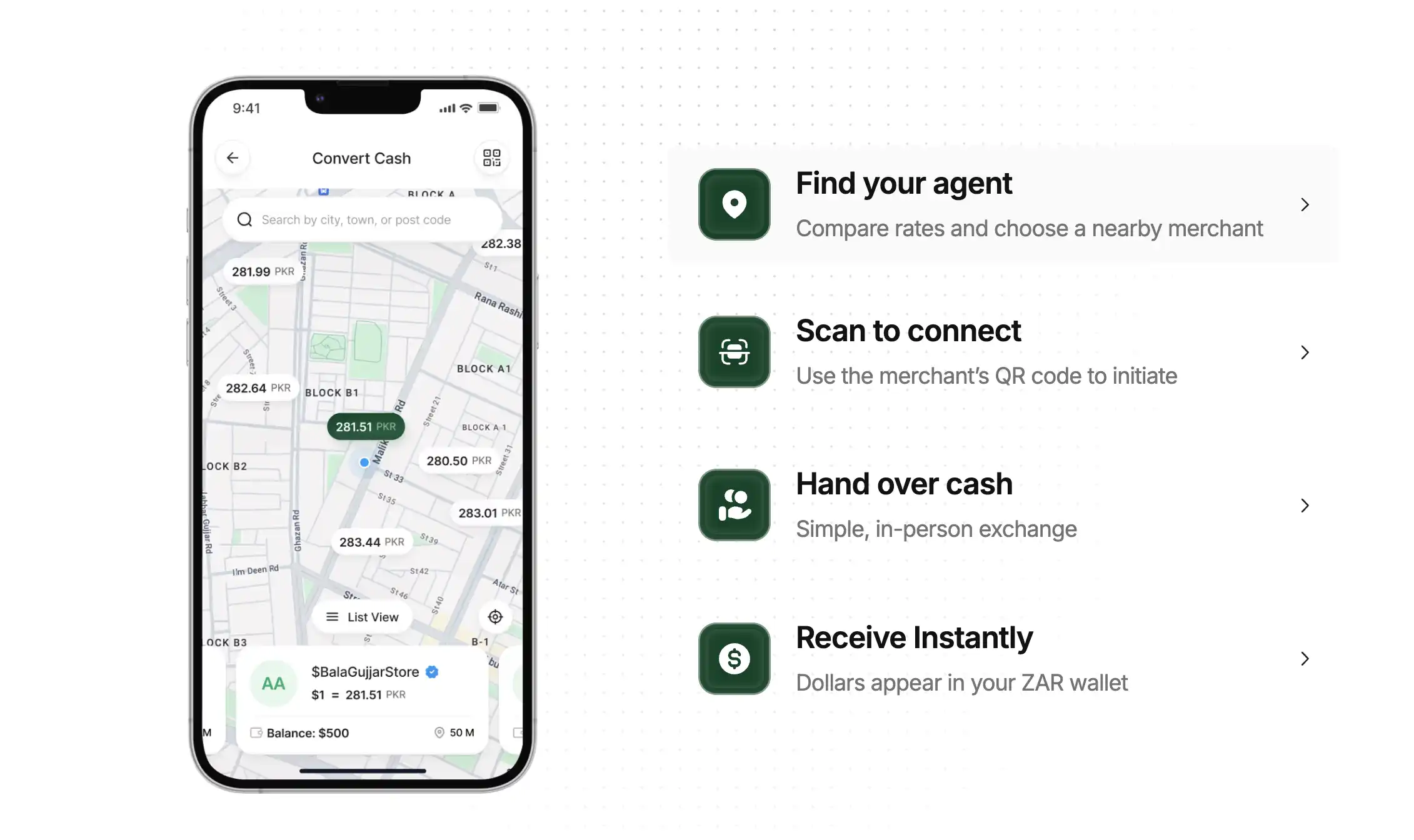
Limitless
Limitless is a social prediction protocol, similar to the functionality of "Polymarket," where creators can easily configure markets and share them with the community. Its modular UI is also very suitable for embedding on mobile devices, and its Feed stream can display the purchases of other users or friends on-chain.
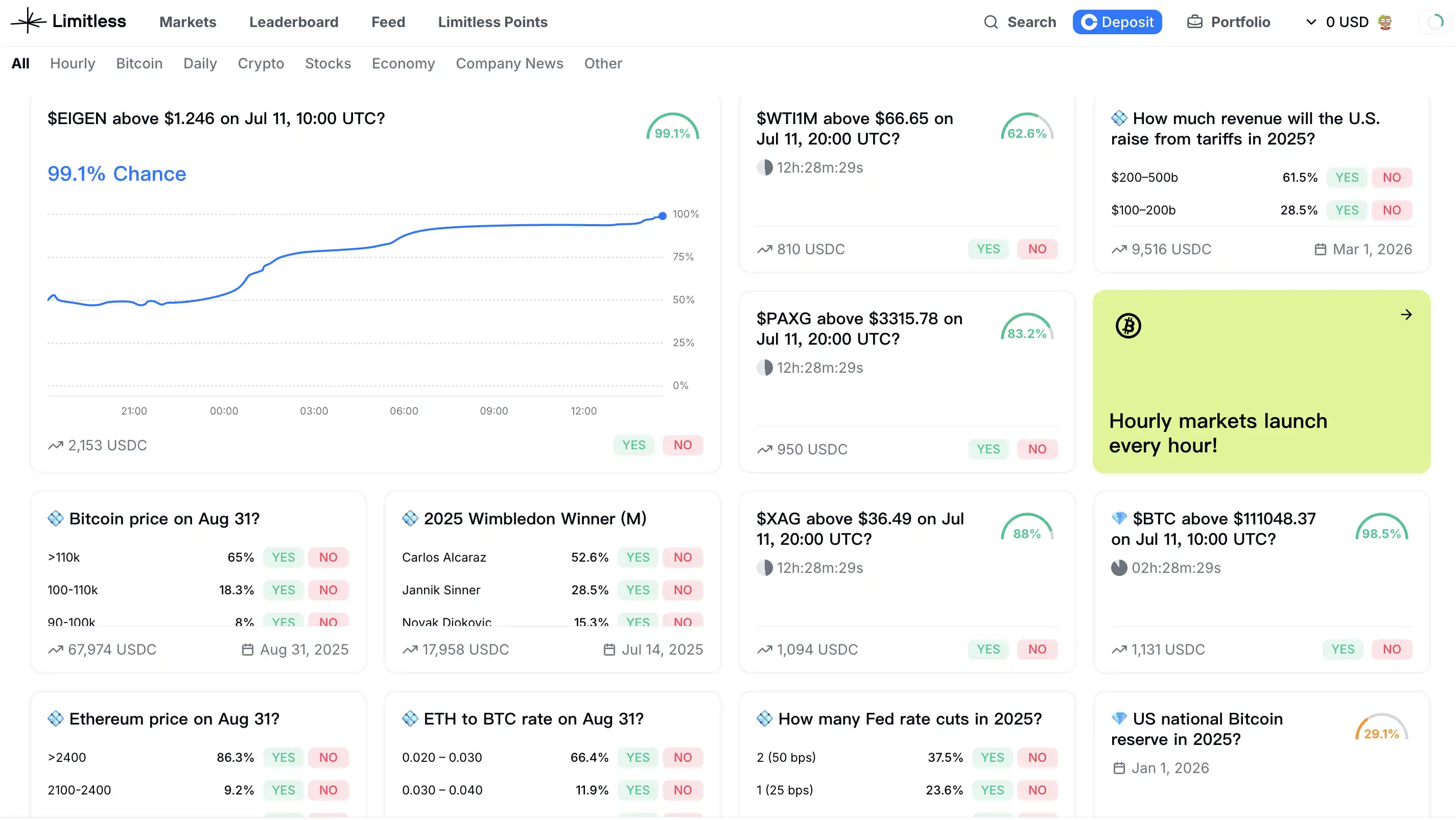
Blackbird
Blackbird is a company focused on leveraging loyalty between restaurants and customers, similar to a membership-based platform like Dianping, providing fully customizable loyalty models and consumer applications for restaurants. Blackbird can serve as a user's wallet or as a membership for a specific restaurant. If the existing food delivery feature of the Coinbase Wallet is integrated and bound to the same user, it will greatly enhance user benefits.
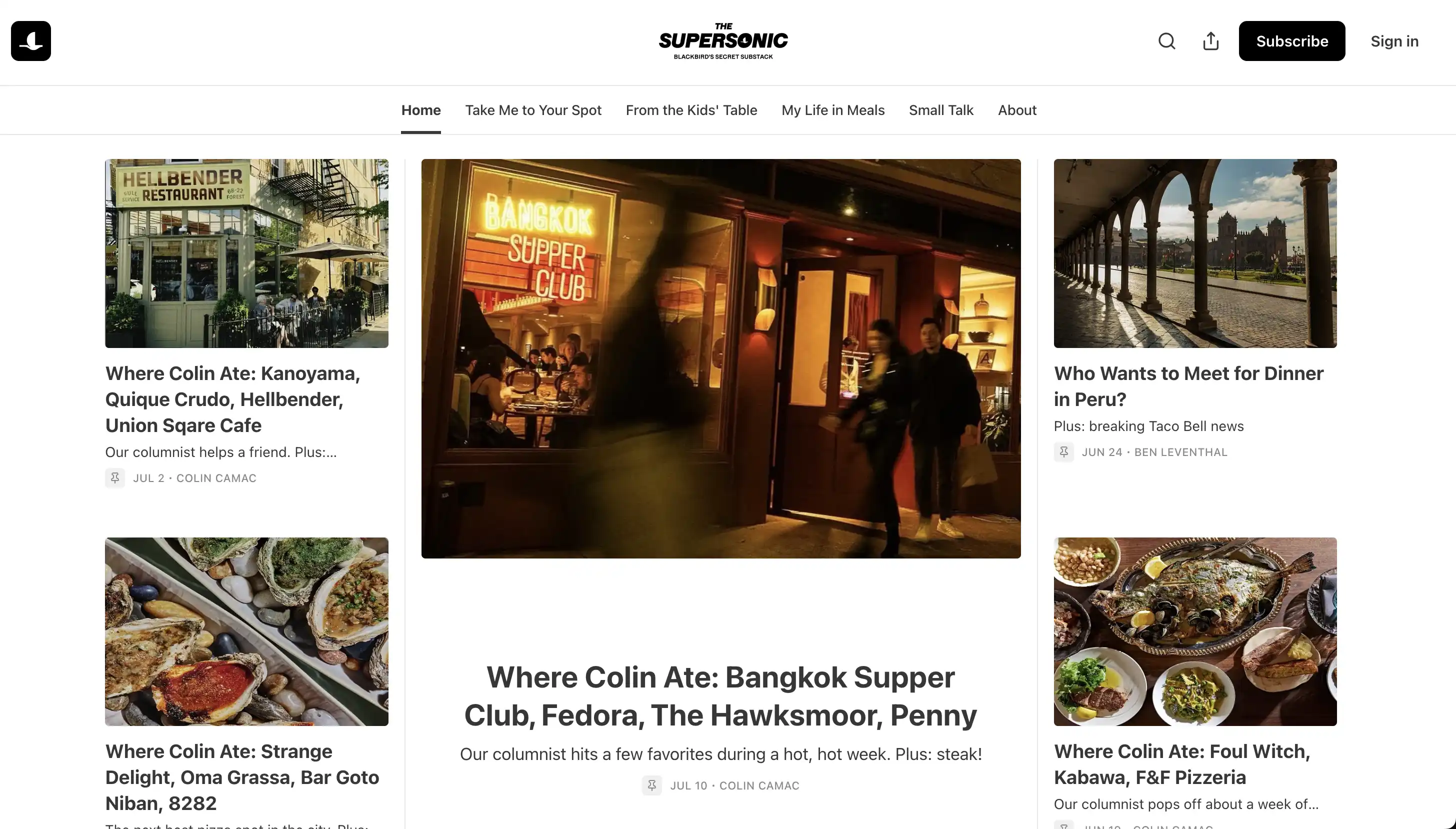
Transitioning from a single cryptocurrency asset management tool to an "on-chain super entry point" that integrates social relationships, transaction execution, content distribution, and offline consumption. Its deep integration with Farcaster allows the wallet to not only hold assets and DApps but also embed modules for social timelines, short videos, chat, and information push, reconstructing the way users interact and engage. Meanwhile, the embedded MiniApp and application recommendation system in the wallet enable it to take on the role of discovering and cold-starting Base ecosystem projects, while also creating a closed loop for Coinbase's ecosystem projects in "payments, social, trading, and consumption."
Blockchain wallets are no longer just "gateways to blockchain." The path chosen by Coinbase Wallet is to become the operating system and social hub of the Crypto world. It serves as a social map on-chain and a distributed machine that continuously generates active transactions and content. A crypto version of "WeChat" may be on the way.
免责声明:本文章仅代表作者个人观点,不代表本平台的立场和观点。本文章仅供信息分享,不构成对任何人的任何投资建议。用户与作者之间的任何争议,与本平台无关。如网页中刊载的文章或图片涉及侵权,请提供相关的权利证明和身份证明发送邮件到support@aicoin.com,本平台相关工作人员将会进行核查。




